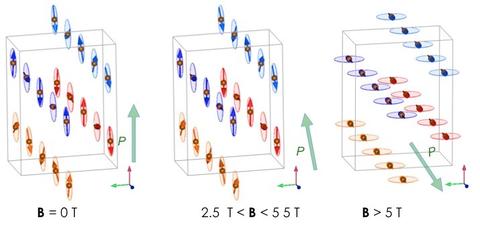The number of magnetoelectric multiferroic materials reported to date is scarce, as magnetic structures that break inversion symmetry and induce an improper ferroelectric polarization typically arise through subtle competition between different magnetic interactions. The (NH4)2FeCl5·(H2O) compound is a rare case where such improper ferroelectricity has been observed in a molecular material. We have used single crystal and powder neutron diffraction to obtain detailed solutions for the crystal and magnetic structures of (NH4)2[FeCl5·(H2O)], from which we determined the mechanism of multiferroicity [1]. From the crystal structure analysis, we observed an order-disorder phase transition related to the ordering of the ammonium counterion. We have determined the magnetic structure below TN, at 2 K and zero magnetic field, which corresponds to a cycloidal spin arrangement with magnetic moments contained in the ac-plane, propagating parallel to the c-axis. Also Neutron Spherical Polarimetry, which is uniquely sensitive to the absolute magnetic configuration and domain population, used in this work unambiguously prove the multiferroicity [2]. The observed ferroelectricity can be explained, from the obtained magnetic structure, via the inverse Dzyaloshinskii-Moriya mechanism.
Here, also we present a neutron diffraction study under external magnetic field, aimed at elucidating the evolution of the magnetic structure under applied magnetic field (see figure 1), and determine the mechanism of magneto-electric coupling, which allows us to describe an unprecedented change from spin current to spin-dependent p-d hybridization mechanism [3]

References
[1] J. A. Rodríguez-Velamazán, O. Fabelo, A. Millán, J. Campo, R. D. Johnson, and L. Chapon, Sci. Rep. 5, 2015 14475
[2] J. A. Rodríguez-Velamazán, O. Fabelo, J, Campo, J, Rodríguez-Carvajal, Navid Qureshi, and L. C. Chapon Sci. Rep | (2018) 8:10665 | DOI:10.1038/s41598-018-28883-z
[3] J. A. Rodríguez-Velamazán, O. Fabelo, J. Campo, A. Millán, J Rodríguez-Carvajal, and L. C. Chapon. Phys Rev B 95, 2017 174439
Javier Campo (University of Zaragoza, Spain)

